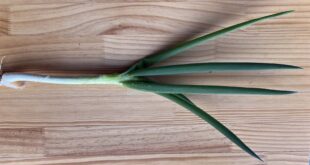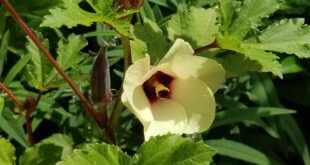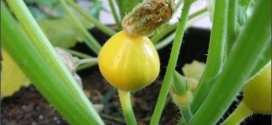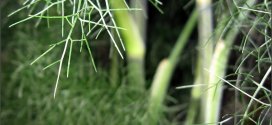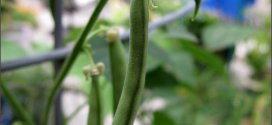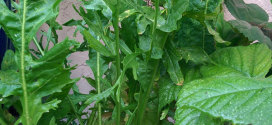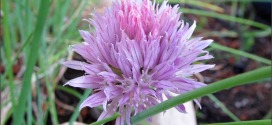Leeks, a member of the Allium family, are an excellent addition to any garden. They’re versatile in the kitchen and relatively easy to grow. In this blog post, we’ll explore how to grow and harvest leeks, their nutritional benefits, and some recipe tips for this fantastic vegetable. Growing Leeks Leeks prefer a location with at least 8 hours of direct …
Read More »Vegetables
Red Okra
Okra is a popular vegetable in many cuisines, especially in the southern United States, Africa, India, and the Middle East. It is known for its green pods that have a slimy texture and a mild flavor. But did you know that there is also a red variety of okra that has some unique characteristics and benefits? In this blog post, …
Read More »Squash – Pattypan
Pattypan squash is a variety of summer squash (Cucurbita pepo) notable for its small size, round and shallow shape, and scalloped edges, somewhat resembling a small toy top, or flying saucer. The name “pattypan” derives from “a pan for baking a patty.” Its French name, pâtisson, derives from a Provençal word for a cake made in a scalloped mould. The …
Read More »Chard
Chard is a member of the beet family that does well in both cool and warm temperatures. It can be cooked or used raw in salads and is high in vitamins A and C. Botanical name: Beta vulgaris Plant type: Vegetable Sun exposure: Full Sun, Part Sun Soil type: Loamy Bloom time: Summer Planting Plant chard seeds 2 to 3 …
Read More »Fennel
If you want to eat the Fennel bulb then make sure you get the Florence Fennel. Fennel is a flowering plant species in the celery family Apiaceae or Umbelliferae. It is the sole species in the genus Foeniculum. It is a hardy, perennial herb with yellow flowers and feathery leaves.
Read More »Cucumber – Hmong
Cucumber, Cucumis sativus ‘Hmong Red’ Family: Cucurbitaceae (koo-ker-bih-TAY-see-ee) (Info) Genus: Cucumis (KOO-koo-mis) (Info) Species: sativus (sa-TEE-vus) (Info) Cultivar: Hmong Red Category: Vegetables Vines and Climbers Height: 18-24 in. (45-60 cm) Spacing: 9-12 in. (22-30 cm) Seed Type: Open Pollinated Sun Exposure: Full Sun Bloom Color: Gold (Yellow-Orange) Bloom Time: Late Spring/Early Summer …
Read More »String Beans
Green beans, also known as string bean, snap bean in the northeastern and western United States, or ejotes in Mexico, are the unripe fruit of various cultivars of the common bean (Phaseolus vulgaris).[1][2] Green bean cultivars have been selected especially for the fleshiness, flavor, or sweetness of their pods. Green beans are found in two major groups, bush beans and …
Read More »Eggplant – Pingtung Long
Eggplant, Solanum melongena var. esculentum ‘Pingtung Long’ Family: Solanaceae (so-lan-AY-see-ee) (Info) Genus: Solanum (so-LAN-num) (Info) Species: melongena var. esculentum Cultivar: Pingtung Long Category: Annuals Vegetables Height: 24-36 in. (60-90 cm) Spacing: 18-24 in. (45-60 cm) 24-36 in. (60-90 cm) Hardiness: Not Applicable Sun Exposure: Full Sun Danger: Parts of plant are poisonous if …
Read More »Horseradish
Horseradish, Armoracia rusticana. Horseradish is easy to grow, provides pretty foliage, and produces that wonderful hot sauce. it can grow in a one foot patch and only 8 to 12 inches of soil. Horseradish roots taste better if they experience a night or two of frost. In Sunnyvale, this typically means late December or early January. But if you need horseradish …
Read More »Chive
Chives are an easy addition to the Sunnyvale garden. It’s great to cut a few stalks with scissors and add them to your baked potatoes or other dishes. You can add them to herb boxes, pots, or in the ground. They are perennials (with adequate care).
Read More »